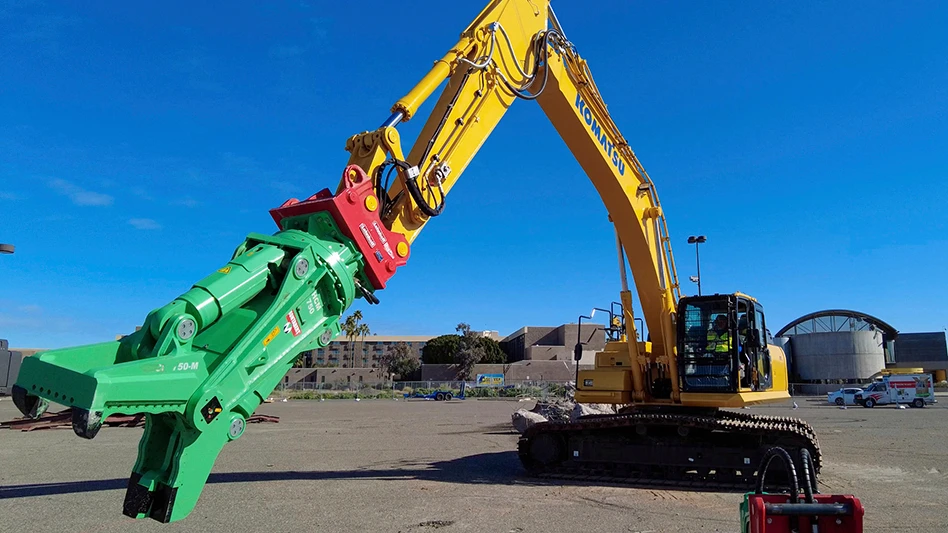Portland, Oregon, adopts deconstruction ordinance

Portland (Oregon) City Council has adopted an ordinance, including code language, which requires projects seeking a demolition permit of a house or duplex to fully deconstruct that structure if it was built in 1916 or earlier or is a designated historic resource.
With council’s unanimous approval of that ordinance, Portland says it has become the first city in the country to ensure that valuable materials from its demolished houses and duplexes are salvaged for reuse instead of crushed and landfilled.
In Portland, more than 300 single-family homes are demolished each year. This produces thousands of tons of waste — a majority of which could be salvaged for reuse. Deconstruction protects health, creates pathways to construction careers and generates affordable reusable building materials, according to the city. Currently, less than 10 percent of houses that are removed use deconstruction.
About 18 months ago, Portland City Council asked the Bureau of Planning and Sustainability (BPS) to develop strategies to increase deconstruction activity as an alternative to mechanical demolition. With the help of an industry- and community-based advisory group, BPS has:
- established a deconstruction grant program;
- been awarded $50,000 in funding from the Oregon Department of Environmental Quality to supplement the grant program; and
- developed recommendations and policy targets that are included in the new rule.
The ordinance follows up on that resolution and adopts new code requirements, effective Oct. 31, 2016, requiring deconstruction for houses and duplexes built in 1916 or earlier or designated as a historic resource regardless of age.
Approximately 33 percent of single-family demolitions would be subject to the deconstruction requirement. Increased deconstruction is expected to divert 4,000 tons of materials for reuse annually, create job opportunities and increase the likelihood of discovering materials containing lead and asbestos for safe removal and disposal.
Detroit Land Bank demolishes 10,000th abandoned home
The city of Detroit celebrated its 10,000th home demolition in July as part of its blighted homes project.

The home, located on Marlowe Street in the city, was demolished July 19. A sign was placed on the house bearing the number 10,000 prior to demolition.
The Detroit Land Bank, which has led the demolition of blighted and abandoned homes using the state’s Hardest Hit Fund in the last two years, demolished 5,000 homes in 2016 and plans to tear down 6,000 more in 2017.
“Every time one of these houses goes down, we raise the quality of life for everybody else in the neighborhood,” Detroit Mayor Duggan, told the Detroit Metro Times.
He added, “Look here, the beautiful houses, the families across the street, these are folks who stayed in this city, paid their taxes, kept their houses up and had to watch the blight spread. We’re finally starting to fight it effectively.”
D.H. Griffin begins former Charlotte Observer building demolition

D.H. Griffin, Greensboro, North Carolina has begun demolition of the former Charlotte Observer office building in Charlotte, North Carolina.
The building located on S. Tyrone Street is being demolished to make way for a future mixed-use development that is expected to include office and retail space.
Charlotte-based real estate firm Lincoln Harris paid $34.1 million for the 10-acre site. The firm has not yet revealed official plans for the site.
American Chemet to investigate contamination at Montana Superfund site
The U.S. Environmental Protection Agency (EPA) and the U.S. Department of Justice (DOJ) have reached an agreement with American Chemet Corp., Deerfield, Illinois, to investigate hazardous substance contamination and to conduct any necessary cleanup actions at the company’s property within the East Helena, Montana, Superfund site.
The site is located in and around the city of East Helena and includes the decommissioned Asarco smelter, the adjacent Chemet industrial facility, properties with the city limits, residential subdivisions and rural properties.
The agreement with Chemet will characterize environmental contamination and determine cleanup needs at the company’s East Helena industrial facility, a seven-acre manufacturing plant that produces copper and zinc products.
Known and suspected contaminants at the site include lead and arsenic. Chemet is required to begin the investigation of the property this year.

Explore the September 2016 Issue
Check out more from this issue and find your next story to read.
Latest from Construction & Demolition Recycling
- Cielo investor requests annual meeting
- CDE sets up washing plant on Long Island, NY
- NWRA: NIOSH cuts a step in the wrong direction
- Ferrous price hikes could be poised to pause
- Northstar secures 15-year lease extension for asphalt shingle recycling facility
- Greenwave asks for SEC filing extension
- Construction Plastics Initiative lines up projects
- ShearCore adds dealership group in Canada






